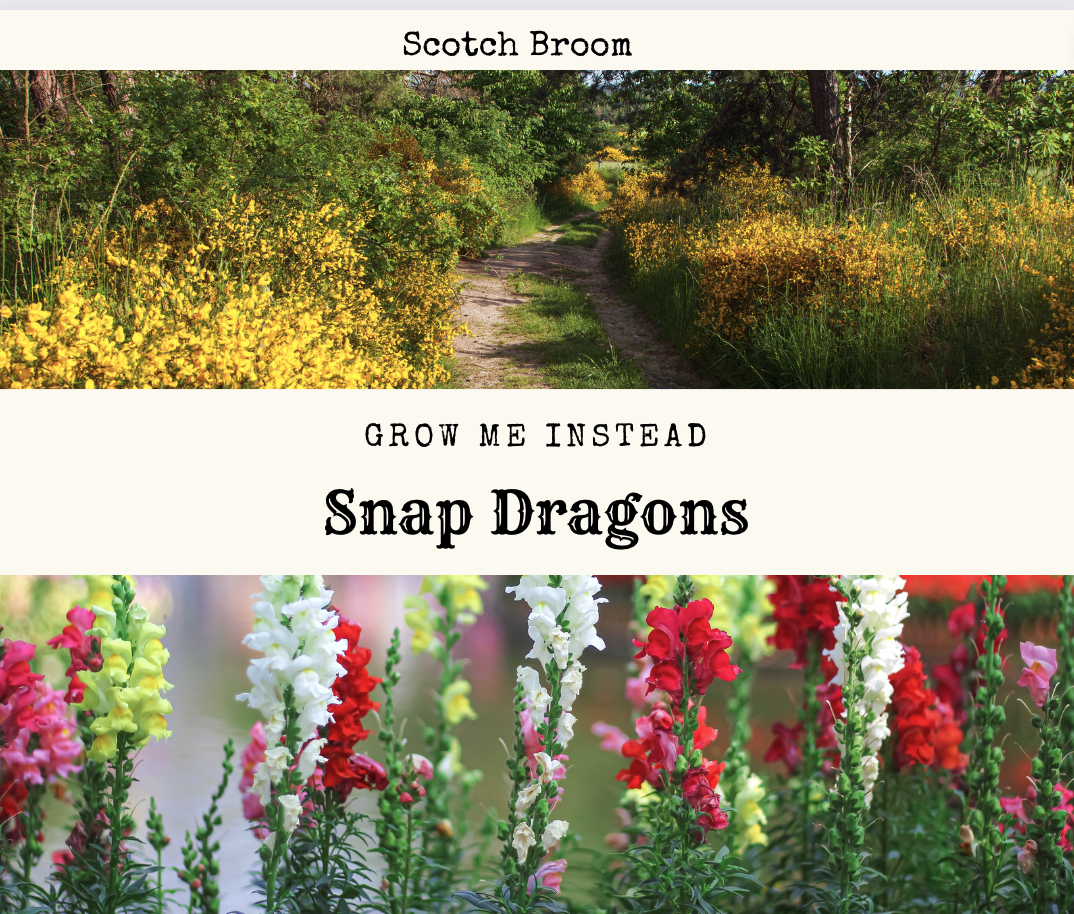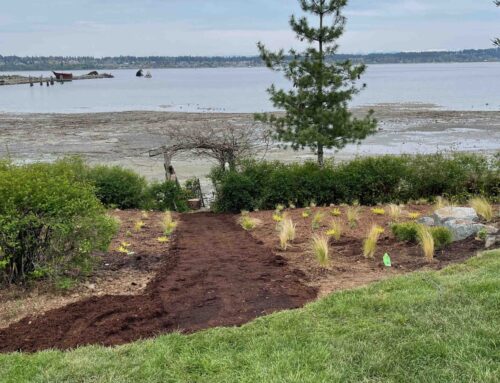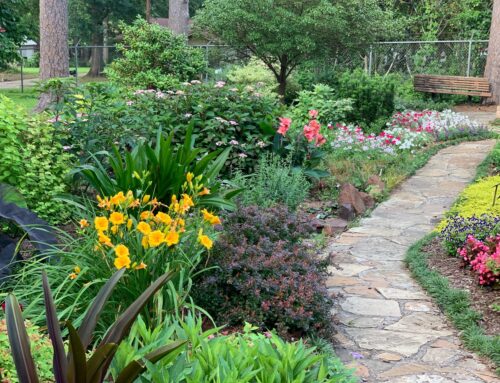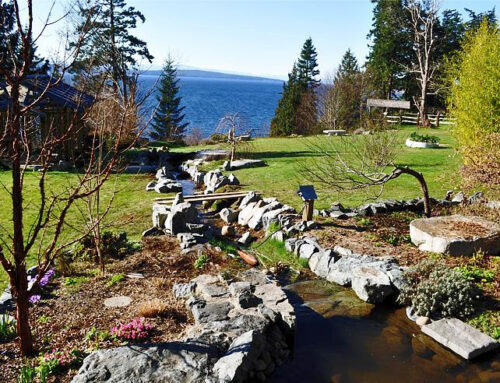The impacts of invasive plants in Powell River
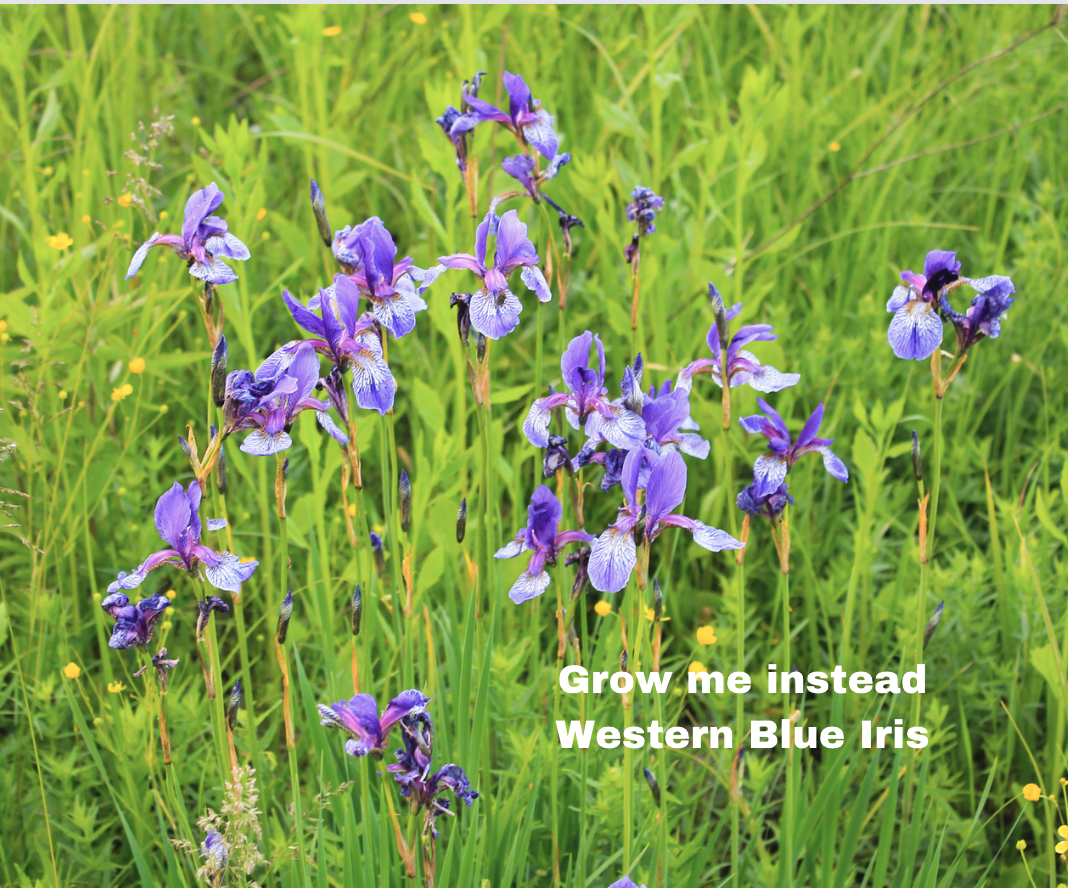
Invasive plant species in Powell River are non-native plants that aggressively spread and have negative impacts on the local ecosystems, economy, and human health. Eradicating invasive plants can be time consuming if it takes over your garden. Resident participation in fighting the spread of invasive species is a critical part of the initiative to control invasive plant species in Powell River.
Negative impacts on invasive plants in Powell River
Invasive plant species can outcompete native plants for resources such as water, nutrients, and sunlight. They often lack natural predators or diseases that would control their population in their native range, allowing them to thrive and spread rapidly in new environments. This can result in the displacement of native vegetation, loss of biodiversity, alteration of habitats, and reduced ecological resilience.
How to help control invasive plants:
1. Know how to identify and properly get rid of invasive plants.
2. Implement best practices on how to dispose of each invasive plant.
3. Refrain from planting invasive plants in your own gardens – many plants are beautiful options but can cause harm to the local ecosystem.
4. Report invasive species: Use a BC Government reporting app, the BC Report a Weed app, or call the Coastal Invasive Species Committee weed hotline at 1-844-871-5117.
5. Participate in local invasive species drop off program.
6. Plan native species and plants that encourage pollinator gardens.
Here are a few examples of invasive plant species commonly found in Powell River:
- Japanese Knotweed (Fallopia japonica): This aggressive perennial plant grows quickly and forms dense thickets that can crowd out native species. It has strong root systems that can damage infrastructure, including buildings and roads.
- Morning Glory (Convolvulus arvensis): Is a climbing or creeping herbaceous perennial plant that grows to 0.5-2m high. The stems climb by twisting around other plant stems in a counterclockwise direction. Although it produces attractive flowers, it is unwelcome as a nuisance weed due to its rapid growth and choking of cultivated plants.
- Butterfly Bush (Buddleja davidii): This annual plant can quickly take over riparian areas and moist habitats. It produces large amounts of seeds – each flower can contain up to 40,000 seeds – that are easily dispersed, enabling its rapid spread.
- Common Tansy: Typically invades open, disturbed areas, pastures and stream banks. Common tansy displaces native plants and reduces available forage for livestock and wildlife. This species is toxic to humans and livestock.
- Scotch Broom (Cytisus scoparius): This shrub invades disturbed areas, including roadsides, meadows, and forests. It forms dense stands and can displace native vegetation.
- English Holly (Ilex aquifolium): Who doesn’t love holly during the winter holidays. With the dark green waxy leaves and lively red berries it is hard to resist. By invasive holly is rapidly spread by birds. Contact the Coastal Invasive Species Committee (CIPC) to find learn about non-invasive Holly species.
- English Ivy (Hedera helix): English Ivy is a smothering invasive evergreen vine which excludes other vegetation. It is very detrimental to trees as it can shade out deciduous foliage eventually killing mature trees within 10 years. The weight of the vines in trees can also cause them to blow over in wind storms.
- Himalayan Blackberry (Rubus armeniacus): These berries are a yummy staple of summer time, but Himalayan blackberry over powers growing, shade-intolerant vegetation such as Garry oak. It forms dense thickets that prevent the movement of larger animals. It decreases bank stability by preventing growth of deep-rooted native shrubs.
- Yellow Flag Iris (Iris pseudacorus): This is often a common flower found in many gardens. It has a tall dark green stem that holds a beautiful yellow bloom. But this highly aggressive wetland invasive that forms dense thickets and outcompetes native plants like cattails, sedges, and rushes. Infestations reduce available habitat for nesting birds, reduces the ability for water storage, and blocks flood control ditches and irrigation canals.
- Canada thistle (Cirsium arvense): This is the bane of all gardeners and regional districts. Despite its common name, this invasive thistle is not native to Canada, It grows in circular patches by spreading vegetatively through roots and once established, it spreads quickly replacing native plants. It also is very prickly and hard to remove. It can grow to 2 metres tall.
“For a full list and proper ways to combat and remove plants visit: Invasive Plants in the Region .”
It’s important to note that invasive plant species can vary from region to region, and local authorities or environmental organizations often keep track of species specific to their area. To obtain the most accurate and up-to-date information on invasive plant species in Powell River, Canada, reach out to local conservation agencies, environmental groups, or regional authorities responsible for natural resource management. They will have the most relevant information and can provide guidance on control and management efforts.
Resources for invasive plant species
Powell River PRC: Invasive Species
BC Invasives
BC Invasives: Plantwise
Almanac: Building a pollinator garden
